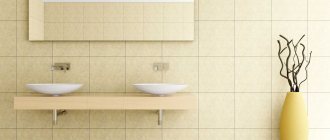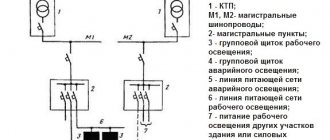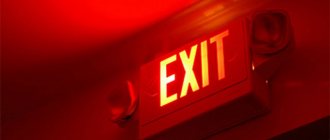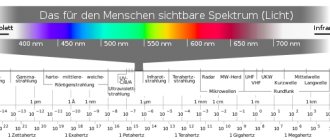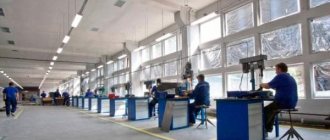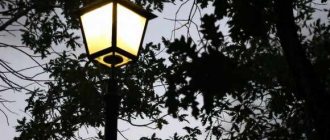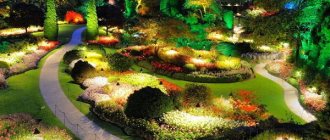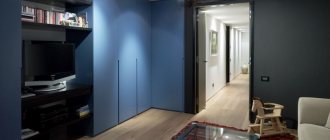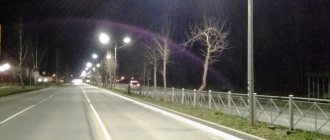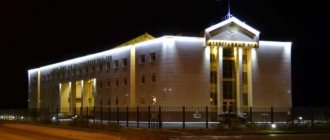The main requirements for office lighting: soft light, flexibility in use and a pleasant color spectrum. After all, the design of a workplace should always be very practical and as efficient as possible.
Lamps for the office must be very powerful, since not all workplaces have the opportunity to use natural light sources. They should be directed directly at the work surface or located above it.
As a rule, when choosing office lighting, budgetary and technical requirements are primarily taken into account. However, there is always the possibility of combining original appearance with functionality.
We offer some amazing lighting solutions for your studio, workshop or office.
Snake by Exenia
Lorenzo Querci's LED snake lamp is a perfect example of combining efficiency and style. Curved lines will gracefully fit into the strict style of the office interior, and movable shades will allow you to illuminate several areas from one point.
Exenia Snake in black
Close-up of a lamp in black
Pendant lamp in red on hanging panels
The most popular and common lighting options in offices are modern pendant lamps. They are convenient to place directly above the workplace, they do not produce glare and ensure uniform distribution of light over the entire working surface.
Types of lighting in the office
With proper design of lighting systems, lighting accents and switching scenarios, it is necessary to eliminate all the disadvantages of old light sources and use all the advantages of modern lighting devices. By type, lighting can be divided into four main groups:
General office lighting
The lighting that provides the main light in a room is called general lighting. Such lighting should not be too bright, otherwise it will cause rapid eye fatigue. This lighting is suitable for:
- conference rooms;
- waiting areas;
- reception lighting
- office
- negotiation room
- open workspace
General lighting in the office should be uniform. It should not highlight certain areas of the room with brighter or less bright light. General lighting is created:
- ceiling lamps;
- linear luminaires of medium power and high suspension height (>2.5m from the floor);
- modular lamps.
Accent or local
Such lighting, to some extent, performs functions opposite to the general one. Suitable for:
- meeting room lighting
Working space
For more comfortable and long-lasting work, it is necessary to provide bright light on the work surface. The lamp should illuminate the employee’s desk with diffused light and not create reflections on reflective surfaces: monitor, clock, jewelry, etc. The light should not shine into the eyes, fall on “heads,” faces, chairs and other areas that are not associated with employees. A person’s attention is better concentrated on those objects that stand out from the rest. In this case, it should be a table (computer, paper, keyboard). Local lighting is created:
- linear luminaires of medium power and low suspension height directly above the workplace;
- table lamps with the correct light beam (optional).
Selecting objects
Such lighting is created by low-power track lamps.
- lighting of paintings and diplomas;
- awards and souvenirs;
- shelves with books.
Universal is the right choice!
The choice of lighting equipment depends on:
- purpose of the premises;
- ceiling heights and lighting installation method;
- furniture arrangement;
- interior tones (color of walls, floors, etc..)
We can prepare a calculation for you, select the necessary equipment and create favorable lighting in your future office with the necessary light accents (above the work areas). To take into account the level of eye discomfort created by modern artificial lighting, we use equipment with diffused light, the required luminous intensity curve (LIC) and a low glare factor (UGR). We at ULIGTH do lighting calculations and selection of equipment completely free of charge! Send your project by email and we will prepare a proposal for you within one day! Suitable for universal office lighting:
- linear luminaires of high power and medium suspension height, directly above the workplace (from 2 to 2.5 m from the floor);
Decorative
It would be more correct to use the expression not “decorative lighting”, but “decorative lamps”. These are the lamps that are installed as decoration. There is no specialized calculation of illumination for such devices.
Talo by Artemide
Talo represents design beyond time and space. The sleek and elegant appearance of the lamp makes it an ideal office lighting solution.
Talo in various office configurations
Pendant lamp in long configuration
Black version of the lamp
Talo model in black in dining room design
White lamp above the desk
Office lighting standards
Working in poor lighting causes headaches, increases fatigue, and impairs vision. Instead of focusing on production tasks, a person wastes work time due to discomfort. To avoid such situations, lighting standards for office spaces have been established.
However, compliance with standards cannot always guarantee high-quality office lighting. The main document establishing lighting parameters in Russia is the Construction Norms and Rules SNiP 23-05-95. In addition to them, there are Sanitary rules and regulations SaNPiN 2.21/2.1.1.1278–03, Moscow city building codes MGSN 2.06–99 and many industry standards.
Table comparing lighting standards for office space in Russia and around the world.
| Type of activity in the office | SNiP 23-05-95, LK lower limit | International Standards (ICE) |
| Computer work | 300 | 500 |
| Negotiations in the conference room | 200 | 300 |
| Working with archives | 75 | 200 |
| Drawing work | 500 | 100 |
| Reception of clients, waiting | 75 | 300 |
| Reading, processing data | 400 | 600 |
Multi-level office lighting is convenient:
- general level providing uniform illumination of the space;
- local lighting of the workplace for the convenience of each employee.
The illumination of the workplace specified in the regulatory documents normalizes the general level of illumination, i.e. local lighting is not taken into account.
Titania Queen by Luceplan
It never hurts to add a little creativity to your office decor. If you love unusual things, you will definitely like the idea of Paolo Rizzatto & Alberto Meda. Such a lamp will not only illuminate your workplace well, but will also become a bright and eye-catching accessory for a boring office design.
We offer three size variations and a million color options for your choice, but special color filters will bring the light to the work surface absolutely white.
Titania Queen in yellow, above the dining table
A gentle version of the chandelier in purple for the bedroom
Bold option in blood red color
Installing color filters to change color
The legislative framework
Exact standards and rules for setting up lighting in an office are prescribed in the following legislative acts:
- Lighting standards at the workplace of each employee are specified in SNiP 05/23/95. This document specifies the requirements for natural and electric lighting. The legislative act must be taken into account both when arranging old workplaces and when planning new ones.
- Hygienic requirements for light in utility rooms are specified in SanPiN 2.2.4.3359-16. The same document specifies the standards for light sources in schools, preschools and general education institutions.
- The necessary lighting requirements for various production areas are specified in the European standard EN12464. It is in such a document that the intensity of the light flux for each room is prescribed. For example, for a small office - 500 lux, and for an open large room - 750 lux.
To meet the lighting requirements in the office, design documentation is drawn up before carrying out work on the electrical network and installing lighting fixtures. These documents are approved and verified by regulatory authorities.
Neximo by TRILUX
This LED pendant lamp is a product of the young German company TRILUX. The unusual appearance captivates with its elegance and elegance. The bottom panel of the lamp is equipped with a special light-diffusing coating, which makes the light softer and harmless to the eyes.
Neximo is ideal for the office with its neutral design and built-in sensor for brightness control.
TRILUX Neximo in white
Lamp model in black color
Shakti Sky by Kundalini
The amazing creation of Marzio Rusconi Clerici will be a bright and stylish accent above the office desk. Very favorable lighting is provided by two incandescent lamps. The glass cylindrical shade will evenly distribute the light over the working surface. Light and airy, the lamp has a symmetrical shape and is available in white and red, as well as trendy orange and purple shades.
Shakti Sky Pendant Lamp in White
Model in white
Lamp from Kundalini in modern kitchen design
Variation of the lamp in orange tones
Office lighting design (part 1)
We select illumination standards according to SP 52.13330.2011. If you cannot determine the illumination standard, then more complete data should be looked at SanPiN 2.2.1/2.1.1.1278-03. In some cases, at the request of the customer, the illumination of some rooms can be increased in relation to the normalized one. In rooms where people are expected to stay for a long time, it is desirable to have an illumination of at least 150 lux when using fluorescent lamps and 50 - 70 lux when using incandescent lamps (including halogen).
When choosing lighting devices, we will focus on lamps (https://www.ltcompany.com). The catalog of their lamps for 2012 contains a sufficient number of modern lamps and, most importantly, their detailed characteristics, including tables with lamp utilization rates.
For rooms with light suspended ceiling panels (except for the archive, the dining room and storage rooms), we choose recessed PRBLux/R luminaires with four 18 W fluorescent lamps, measuring 595x595 millimeters. We will use lamps manufactured by OSRAM brand LUMILUX L 18W.
The reception area will be illuminated with SOLO pendant lamps with two 28 W OSRAM LUMILUX FH 28W fluorescent lamps. Let's arrange them in two rows along the room.
In the meeting room we will install VIGO pendant lamps with two 35 W fluorescent lamps OSRAM LUMILUX FH 35W. We will place the lighting fixtures along the axes of the tables. According to the calculation, we got 8.4 lamps, but we are installing not 9 lighting fixtures (the number of lamps is rounded up), but 8, since a clarifying calculation using software showed the sufficiency of eight lamps.
Pendant lamps are attached to the ceiling. The place where the hangers pass through the suspended ceiling panels is covered with decorative overlays.
When optimizing the lighting of the most critical premises, various lamp options are considered when choosing lighting fixtures. Representatives of the customer must certainly be involved in this process.
To illuminate the dining room and rest room, we use OTR/R recessed indirect light luminaires. The luminaires are equipped with two 36 W OSRAM DULUX L lamps. These luminaires have a low luminous flux utilization rate compared to other lighting devices, but provide very comfortable lighting with soft diffused light.
In the closets we will install recessed ARS/R lamps with two 18 W lamps OSRAM LUMILUX L 18W. These lamps occupy half the cell of the suspended ceiling.
For the electrical switchboard and server rooms, we will choose fluorescent lamps with ARCTIC type shades with two OSRAM LUMILUX FH 28W lamps. These lamps are classified as ceiling lighting fixtures, but can also be suspended under the ceiling using pendants. Reducing the installation height of lamps allows you to increase the utilization rate of the luminous flux and thereby reduce the required number of lamps.
The archive room is classified as a fire hazardous room (Chapter 7.4 PUE). Lamps must be selected with a dust and water protection class of at least IP 23 for class IIa premises containing solid flammable substances. The same lighting fixtures are suitable for lighting the archive as for lighting the two previous rooms. According to the calculation of illumination in this room, three lamps are sufficient. But to reduce the unevenness of illumination, we add a fourth one. We place the lamps in one row in the center of the room, since shelving will be installed near the walls.
If the room is not intended to be used for storing a large number of paper documents, then it should not be called an archive. Since such premises are subject to many requirements for fire resistance of walls, doors and electrical wiring.
We select all fluorescent lamps with a color temperature of 3000oK (warm white light).
For bathrooms, small lamps are needed that can be installed on metal slats of a suspended ceiling. Let's focus on DL LED 10 LED lamps with a power of 8 W.
Modern lamps are equipped with various diffusers and grilles that significantly reduce the glare of the light source, which simplifies the process of creating comfortable lighting.
We will calculate the illumination using the luminous flux utilization coefficient method. For some rooms we will also calculate the illumination using software using the DIALux program and compare the results obtained. Download the Excel file with the calculation table Examples of illumination calculations from the article “Illumination calculation”. Instead of the values available there, we enter our data from the table (the field for entering values is highlighted in yellow). Based on the obtained values of room indices, we determine the values of utilization coefficients using tables from the lighting fixtures catalog and enter them into the table.
In small rooms the room index is significantly less than 0.6. The accuracy of calculations using the utilization factor method decreases significantly. The illumination of these rooms can be calculated using the point method (calculating illumination using a known luminous intensity curve) or using software calculation tools.
It should be taken into account that the illumination of some rooms (bathrooms, corridors) is calculated at floor level. But in corridor 10, the calculation was performed on the working surface, since copying equipment will be installed in this part of the corridor.
Lisca H2 from Rotaliana
A simple and modern lamp in warm colors. Its unpretentious rectangular design makes it ideal for office lighting. The design is made of anodized aluminum and comes in several colors. You are offered a small assortment of red, yellow, green, blue and classic white. The lamps are available in 28 W and 54 W configurations.
Lisca H2 in yellow for the kitchen
Pendant lamp from Rotaliana above the table
Model in white
Tolomeo by Artemide
Ideal for graphic designers, artists, architects and engineers, it was designed by Giancarlo Fassina & Michele de Lucchi.
Despite its rather simple design, the unusual Tolomeo desk lamp copes with all the needs of a worker in terms of lighting. There are several colors to choose from, including classic silver.
Table lamp Tolomeo in silver
Lamp from Artemide to illuminate the monitor
Color variations of the Tolomeo table lamp
Regulatory framework for office lighting
Lighting standards in the office workplace are prescribed in epidemiological documents. SanPiN specifies requirements for light brightness and rules for organizing the work space. General requirements for the quality and quantity of light sources are specified in SNiP and other technical design documentation.
Among the general requirements it is stated that:
- the lighting of each workplace must be sufficient;
- the employee must have access to adjusting the “personal” light in the workplace - directing the flow and changing the intensity;
- the mandatory presence of natural light, and not just artificial;
- Ceiling lamps should have a dim light and not cause a visual defect.
The recommended brightness of elements in general lighting fixtures is 200 CD/m². And the natural light coefficient must be at least 1.2%. Local lighting sources near workstations must be located to the right of the PC monitor.
Nosy T by Lightyears
The small and quirky Nosy T lamp was designed by Kasper Salto & Sigsgaard. Infinitely flexible, slim and almost invisible, Nosy T is the ideal solution for illuminating your workplace.
You can place the lamps at any angle convenient for you, providing local lighting from all sides. The design is presented in minimalist colors: classic black and impeccable white.
Nosy T in black and white
Infinitely flexible table lamp from Lightyears
Versatile Table Lamp Design
How should different areas in offices be illuminated?
Three office layout concepts remain the most popular today: traditional (monofunctional premises), open space (walls replaced by zoning) and fusion/freestyle (working environment in a residential and/or gaming environment). Lighting, regardless of the type of layout, should be based on the basic requirements for functional areas - receptions, workplaces, recreation areas, meeting rooms, offices.
Workplaces
Light that is adequate to the tasks performed is not only about the current productivity of employees. Proper workplace lighting has a significant impact on staff health, creativity and long-term motivation. Diffused solar radiation is optimal for work in many respects. However, its deficiency or absence can be fully compensated by competent technical solutions.
In addition to meeting the key requirements of technical standards, it is necessary to take into account in detail the direction of light flows and the location of computer monitors. The standard workplace illumination is Emin = 500 lux, while the average luminous flux from a laptop monitor is 200 lux. If background horizontal flows exceed 200 lux, it interferes with normal operating performance.
Therefore, it is necessary to achieve different levels of illumination on horizontal and vertical control planes. In cases where it is impossible to directly influence horizontal flows, they must be screened - be it the use of conventional blinds on the windows or individual screens/partitions.
Rice. 11. Typical lighting with raster lamps for an office with a low ceiling
The problem of background glare is most effectively solved by proper room planning. In addition to background glare, it is important to exclude exceeding the permissible brightness and glare of artificial ICs that fall into the field of view of workers and are reflected on monitors.
Issues of uniformity and contrast of workplace lighting are resolved depending on the architectural features of the room, its layout and the complexity of the light scene:
- Operating areas with low ceilings
- with single-layer light, the required parameters can be achieved with raster and linear lamps, provided there is good dispersion and re-reflection of flows (matte screens, plate/cellular reflectors). If there is a lack of contrast, it is rational to supplement the general lighting with table lamps. - Operating areas with high ceilings
- a 2-layer scheme is optimal, implemented with linear lamps located at the upper (general) and lower (local) lighting levels. With a ceiling height of more than 4 m, it makes sense to use dome lighting in combination with linear and downlights (each type of these can work in both general and local layers).
Rice.
12. Double-layer lighting with modular and linear lamps in an office with a high ceiling. The optimal color temperatures of light in work areas are neutral and moderately cool tones 3000 - 5000 K. It has been scientifically proven that such lighting invigorates, increases alertness and improves the discrimination of small details.
Lobbies
When the halls located on the first floors are separated from the street space by glass walls, it makes sense to illuminate such premises according to the canons of retail lighting merchandising. The lobby becomes a showcase of the office in the literal sense. Additional vertical illumination of the entrance plane (up to 1000 lux) with downlights or powerful track spotlights is suitable.
In more modest architectural settings, decorative lighting in hallways also plays an important role. But in order to realize the necessary emotional effect (“cordial meeting”/“confidentiality”/“status solemnity”) it is not necessary to raise the level of illumination. You can play with contrasts while staying within the 200 - 300 lux required by the standards.
Rice. 13. Lighting of office hallways has a distinctly decorative, image-oriented character.
Recreation areas
In recreation areas, single-level general lighting is advisable, characterized by:
- Maximum diffuse flow
- A complete absence of glare and direct glare, even when a vacationer looks at the ceiling.
- Moderate illumination levels (no more than 300 lux) and a warm IC spectrum (2500 – 2700 K).
This can be achieved by using models with matte shades, or by placing lighting fixtures in deep ceiling coffers.
Rice. 14. Soft ambient light in warm shades is optimal in office sitting areas
Reception
The task of lighting reception areas is to implement 2 – 3 functions of light in a small space:
- Attract a visitor.
- Provide receptionists with good working light.
- Promote the company brand.
Therefore, as a rule, a common upper level of pendant lamps is used, playing both a functional and decorative role. Additional accents are focused on the counter or information board. On the desktop, counters add table lamps or linear lights that are hidden from visitors.
Rice. 15. Attracting visitors and working lighting for receptionists are the main tasks of lighting reception areas
Meeting rooms, rooms for meetings and brainstorming sessions
Warm ambient lighting of moderate brightness (no more than 300 lux) helps create an optimal emotional atmosphere here. However, sometimes it is necessary to familiarize partners with printed documents or conduct vigorous operational work with employees. Therefore, it would not be amiss for concentrated activities to provide additional ICs or a separate group of lamps in order, if necessary, to raise the illumination level to 500 - 700 lux. The recommended color temperature of this light layer is 4000 – 7000 K.
If stands are used for reports and presentations, this area requires emphasis (for example, through adjustable track or stationary spotlights).
In the case where a small meeting/meeting room is planned as part of an open space office, it is usually simply separated by glass partitions from the general space. Then the ambient lighting coming from outside is quite enough, and you can only supplement it with one lamp located above the center of the table.
Rice. 16. Meeting rooms can also be designed as relaxation areas, but they cannot do without a bright lamp above the table, which helps to get into a working mood
Tick W0 from Rotaliana
The most unusual lamp from Rotaliana. The amazing design allows you to attach it to absolutely any surface.
Tick W0 in various variations
Rotaliana sconce close up
Don't forget that proper lighting in your workplace will help you maintain perfect vision for many years. When choosing a lamp, be guided not only by design preferences, but also pay great attention to your safety.
Workplace lighting
Production efficiency is influenced by various factors, one of which is the availability of adequate lighting. Conducted studies show that when the quality of light is unsatisfactory, labor productivity decreases, the number of accidents at work increases, and the vision and general well-being of workers deteriorate. In dim lighting, a person is forced to strain the eye muscles all the time, which inevitably leads to loss of vision, and in too bright lighting, depression may occur. How to properly organize workplace lighting?
- Workplace lighting requirements
- Existing standards
- Types of lighting
- Sources of light
Workplace lighting requirements
The main task when designing lighting in the workplace is to create the proper level of light, as well as to eliminate shadows and glare that negatively affect the perception of information.
If the question concerns the lighting of the desktop on which the monitor is located, then 320-500 Lux is required in this area. In this case, the illumination of the monitor surface should be no more than 300 Lux.
Lux is an international unit of illuminance. 1 Lux is equal to the illumination of a working surface of 1 sq. m. with a luminous flux brightness of 1 Lumen.
Lighting in the workplace should be uniform and not create glare. The difference in illumination of working surfaces is allowed to be no more than 3:1, and the difference between the degree of illumination of the work area and walls/equipment is no more than 10:1. The pulsation coefficient should be no more than 5%.
Illumination pulsation coefficient - the number of oscillations of the light flux incident on the working surface is calculated using a special formula.
It is known that pulsations may not be visually perceived by the organs of vision, however, they have a huge impact on the state of the body - fatigue, irritability, decreased performance and even depression appear. When the pulsation frequency is more than 300 kHz, there is no negative effect on the body, but if the frequency is lower, the biological rhythm may be disrupted, which leads to various ailments.
Glare on the monitor can cause no less harm to the body than a lack of light or pulsation. Glare makes you constantly turn your head and strain your eyesight, which inevitably leads to rapid fatigue.
To eliminate glare on the monitor, you need to place a number of lamps parallel to the workplace, and also use protective screens for the monitor. Desktops must not be positioned in such a way that the work monitor reflects other displays.
Because of this circumstance, among other things, workplaces are separated by special partitions.
Of course, one of the requirements for work lighting is the ability of the worker to independently regulate the intensity of the light flux.
Existing standards
Lighting standards for office premises
| Type of room | Illumination standard according to SNiP, Lux |
| Regular offices with computers | 200-300 |
| Office with large areas | 400 |
| Offices with high visual load (drawing, artistic work) | 500 |
| Meeting facilities | 200 |
| Staircases and flights | 50-100 |
| Halls | 50-75 |
| Archives | 75 |
| Utility rooms | 50 |
Lighting standards for industrial premises
| Type of activity by degree of visual load | Subcategory | Combined lighting, Lux | General lighting, Lux |
| Highest precision |
|
|
|
| Very high precision |
|
|
|
| High precision |
|
|
|
| Medium accuracy |
|
|
|
| Low accuracy |
| 400 |
|
| Rough work | 200 | ||
| General monitoring of the production process |
|
|
